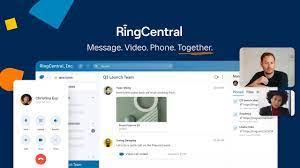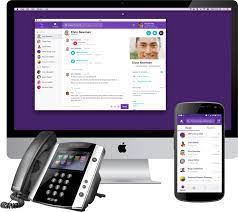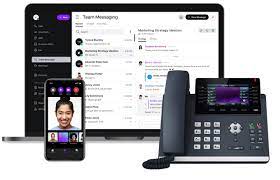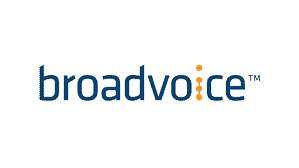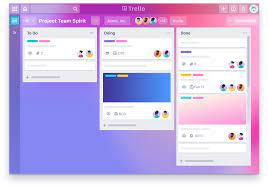Best and most efficient communication services will be explained in this article. Everyone is discussing the advantages of working remotely… But let’s be honest about the dangers that might arise. One significant problem teams may have while switching to remote teams is deteriorating communication.
A lot can be lost in translation if you can’t stroll over to a colleague’s desk to ask a question. Your tone in an email can be misunderstood, or a task might go completely overlooked. In fact, cooperation and communication are two of the main challenges for remote employees, according to a Buffer1 survey.
The last thing you want is a slowdown that might result in lost income and productivity. Fortunately, there are low-cost technologies available to keep everyone in touch, regardless of where they work.
What are “communication tools,” anyway?
In a word, communication tools are online programmes that facilitate teamwork and increase output. Since there are several methods to interact at work, there are also numerous technologies available that are designed to do certain specific tasks. There is something for every requirement, from group chat to video calling, project management to task management.
All of these solutions have one thing in common: they make it possible for you and your team to communicate in real time even when you aren’t in the same location.
Why are communication tools important for business?
Have you ever become bogged down in a reply-all email chain that never ends? Or were you unable to complete any work because your day was jam-packed with meetings after meetings?
It’s not just you. How much time do we waste each day sifting through our inboxes and attending pointless meetings when a brief email or message would have sufficed?
Online communication tools can make working with others more productive, even while they won’t necessarily replace all emails or meetings.
For instance, group messaging and chat tools enable you to send brief messages, while project management tools support project oversight and expeditious task prioritisation for employers.
With these realities in mind, it makes sense why there are so many applications available that are intended to facilitate greater collaboration and communication so that we can do more work in less time.
Nevertheless, it might be challenging to determine which technology is best for your company. We’ve created the list of communication tools below as a result. There is a solution on this list that will work for you, regardless of whether you’re a two-person startup or the CEO of a Fortune 500 corporation.
7 tips for choosing the best communication tools for your business
Finding the best communication platform for your particular organisation might be intimidating, but we have some suggestions to guide you.
1. Look for an all-in-one solution
The alternatives on the list below are some of the more potent and versatile ones, and they merit further examination. Why? It saves time to have all of your communication requirements in one location, such as file sharing, group messaging, and video conferencing.
Employees switch between different applications more than 1,000 times every day, according to new study.
2 Although this form of inefficiency may appear minor at first, it results in time lost, work neglected, and errors made.
Simply put, more features are better.
2. Find tool the whole team will Love
It’s likely that the members of your team are diverse in terms of age and tech knowledge. Think about everyone’s skills while choosing your new communication medium. Clean, straightforward platforms with genuinely intuitive functionality may greatly increase the likelihood of enthusiastic adoption by workers of all skill levels.
For your staff and your company, a kinder learning curve is beneficial. It translates into less time being wasted on training and irritations and more time being spent on important tasks. To make sure you locate a solution that makes their life simpler, not more difficult, it could be a good idea to include your less tech-savvy staff members in the test drives.
3. Security is key
Do you know what “Zoombombing” is? This year, remote teams of all sizes have discovered the value of a secure connection. This is especially true if your line of work deals with sensitive data; consider the financial, educational, medical, insurance, and high-tech industries.
Find out how many levels of protection are provided by the communication platforms you explore if confidentiality is crucial to your team and clients. (RingCentral, for instance, has seven levels of protection, which appears to be impossible to top.)
Want to know more about the safety of video conferences? Install this guide.
4. Think (and ask) about scalability
We bet growth is what you’re after. More clients implies your team will have additional work to do and may even need to hire more people. If you don’t look far enough into the future as you shop, this could result in growing pains for your preferred communication tool.
Find a communication medium that will develop alongside you rather than capping out. As a result, you won’t need to retrain everyone on a new technology as your organisation scales up and may continue the platform into the subsequent phases of your business for more continuity.
5. Look for great customer support
You could occasionally encounter a technology issue that even even your best tech experts can resolve. It’s essential to seek for an internal communication platform that provides an excellent degree of customer assistance to assist you during these moments to make up for it. This might be done via email, phone assistance, or social media.
If your communication platform only offers 9–5 customer care, for instance, you might not be able to seek assistance if you have a technical problem while on an after-hours conversation with a client.
You’ll never run out of time if you invest in a product like RingCentral, which starts with its Standard package and provides 24/7 unlimited phone and chat assistance. This enables you to resume operations as quickly as possible, so reducing any disturbance for your customers.
Find out more about RingCentral Advantage, a white-glove service programme that can help you avoid spending hundreds per hour on IT support.
6. Does it have a range of features to suit your needs?
You’ll discover that not all team communication platforms have a tonne of functionality when you read this article. Depending on your sector and business demands, some are more specialised. For instance, Trello is mostly utilised by creative teams, whereas Jira is intended for development teams. Simply put, some firms don’t require a lot of functionality. However, having them there can’t possibly hurt.
Maybe you’ve never thought of having a product for HD video calling that can also assist you in task management and provide business statistics. All of these and more are possible with RingCentral. Imagine working on a Trello project board with colleagues and then jumping right on a call to convey your extra comments. With the help of a creative technology like RingCentral, this is all feasible.
Examine the requirements of your company and consider whether any new capabilities, such email integration with Outlook or Gmail, might be beneficial.
7. Ensure it’s cost is effective
Whether you’re a small to medium-sized business (SMB) that is just getting started or one that is expanding, you need to pick a cost-effective communication tool that will work within your budget. Think about if the amount being requested is fair for the features offered. Does it provide a variety of communication options? Or is it just concentrated on group calls or messaging? Check whether the product gives a variety of upgrade possibilities as you develop and progress.
The 8 best business communication tools, ranked by value
Not all forms of contact are made equal. It might be challenging to determine which platform provides the most value for the money.
Because of this, we’ve compiled a list of some of the top choices and ranked them for you according to the features they offer and their actual worth to small businesses:
Top 15 Best Communication Services In 2022
Top 15 Best communication services are explained here.
1. RingCentral: Powerful features and greatest value for small businesses
Instant communication visual conference. telephone calls handling of tasks. file exchange. RingCentral, the corporate collaboration and communication tool that integrates all of these practical capabilities into a single unified team workspace, gives you all of that and more. This is another alternative of communication services. Also check free file backup software
You may talk in real time with RingCentral from any device or location. You may dial into video conversations and meetings with just a click, share links and data, build team group chats based on projects, topics, or departments, and more.
You’ll like how RingCentral organises all of your team’s communication into shared chats, files, tasks, and calendars if you’re sick of having all of your emails, discussions, and resources dispersed across numerous platforms.
RingCentral is well-liked by its customers for being simple to use and for making it easy to convert discussions into usable tasks. It also connects with several well-known business products like Google Drive and Box.
Here are some examples of the best collaboration tools in use:
2. 8×8: Good for small teams on a tight budget
Similar to RingCentral, 88 provides an all-in-one communication solution at a reasonable fee. They have a simple UI and are one of the more economical feature-rich alternatives to RingCentral. For these reasons, if you have a limited monthly budget for new software, they could be worth looking at.
There are certain restrictions, as you’ll discover with the more affordable items on this list. If your company’s primary objective is expansion, for instance, 88 might not be the best option for your team. Even at the highest price tier, the maximum number of participants for voice and video conferencing is 100. As a result, you might have to start looking for a communication tool all over again in a few years or even sooner. This is another alternative of communication services.
File sharing on 88 is likewise limited. The functionality of dropping documents into any conversation you want ends there. You must browse back through the chat to get what you need because, unlike RingCentral, there is no ability to collaborate on a file or pin it for later.
3. Fuze: Good for visual collaboration
To get the approval of the entire team on a document, Fuze lets you upload and exchange files while you’re on the move during video chats. It surely outperforms that endless email thread! The whiteboard tool is also really nice and enables distant teams to arrange ideas and brainstorm:
The Fuze software sometimes freezes or seizes up, and customers have complained that it takes a long time to launch. Additionally, they have had issues with the mobile messaging feature crashing and poor or nonexistent phone service. These problems might seriously hamper teamwork.
There is no way to know how scaleable the platform is as Fuze does provide a high number of meeting attendees (up to 1,000 for most plans), but this capacity is only available for a “limited period,” as stated on their pricing website.
4. Vonage: A feature-rich platform
The positives
Vonage is comparable to RingCentral in terms of the capabilities available on its communication platform. Overall, Vonage customers are satisfied with the app’s usability, the breadth of functionality offered by the team messaging tool, and the amount of third-party connectors covered by their subscriptions.
With one of the highest price tags on our list, you could anticipate receiving excellent customer service. However, you might have noticed a few common themes in customer evaluations.
Vonage appears to function more like a conventional phone company than a cloud communications provider from the inside. Some former customers claim that Vonage provides two-year contracts that are difficult (and expensive) to terminate. Others reported that customer support takes a long time to correct billing problems. Others recall the sales crew offering them the freedom to end service without incurring a price, only to be surprised with a hefty cancellation fee. 3
Vonage has a feature-rich, user-friendly interface, so it’s likely that you won’t have to worry about it, but make sure you ask a lot of questions up front and receive guarantees in writing before signing that contract.
5. Broadvoice: Good on customer service
Another reasonably priced VoIP provider that provides some extra team communication options is Broadvoice. Their programme lets you start a conversation via the messaging function and immediately transition to a video chat, just as RingCentral. This is quite helpful for keeping projects on schedule and preventing misunderstandings.
The platform also got praise for its support and customer care departments.
The B-hive Communicator is one of the most expensive options on this list because it is only available with Broadvoice’s most expensive price plan. This is another alternative of communication services.
Furthermore, it’s not apparent from the Broadvoice website what the Communicator app’s audio and video conference capabilities are, or what further services its group messaging offers.
Our best piece of advise is to make sure you thoroughly investigate what’s included in the Communicator app before choosing Broadvoice as your business communication tool so you know precisely what you’re receiving.
6. MiCloud Office: Reliably secure
In the PBX industry, MiCloud by Mitel is a well-known device that provides a trustworthy softphone solution for small organisations. Because MiCloud Office is hosted on Google Cloud, you benefit from top-notch security and scalable future capabilities.
The negatives
High-def audio quality is what MiCloud promotes, but it does not offer high-def video, which might be problematic for your virtual face-to-face meetings. For all conference calls, RingCentral provides HD voice and video. Depending on how much you wish to pay each month, they also have various restrictions on the number of meeting attendees.
The softphone function is generally well-liked, however MiCloud customers frequently express frustration with the product’s usability. The amount of initial training needed to get their teams up and running was highlighted by several reviewers. Others complained about the difficulty of getting in touch with tech support and believed the device itself wasn’t worth the additional price. 5
7. CenturyLink: Good for Microsoft integrations
Because they also provide internet for small enterprises, CenturyLink stands out from the other UCaaS providers on this list. If you want to utilise them as a full-service product, they might be more expensive than the other services you can discover here, but it might be convenient to have your internet and cloud services under one roof in the event of a problem.
Through Microsoft Teams, their Business Communicator software offers internal communication capabilities including group chat, file sharing, and video conferencing. However, it’s unclear what the prices are for their two types of digital phones, so if you’re curious, you’ll need to contact or speak with them. This is another alternative of communication services.
The negatives
The team communication tools from CenturyLink might not be your cup of tea if you dislike the Microsoft user interface. According to TechRadar, Microsoft’s OneDrive cloud storage platform isn’t as polished as competing services. Additionally, Teams doesn’t always feel natural or simple to use. This might be a significant time-waster while getting your team organised.
8. 3CX: The super-cheap option
If cost is your primary issue, you should consider 3CX as no one can match it. Their most costly plan costs less than $2 per user each month, thus we are not exaggerating. You receive some basic communication capabilities for this cost, including team chat with status updates, voicemails, and faxes delivered to email:
You probably already know that 3CX is a case of value for money. There are no file sharing, storage, or annotation options, therefore the team collaboration tools are rather restricted. Customers also express dissatisfaction with the call quality and abrupt app shutdowns. 6
This could be useful in an emergency if you need something quick and inexpensive, but we advise you to hunt for a better long-term solution so you don’t need to buy a new communication gear anytime soon. Also check Cloud File Sync Software
9. Slack: Good for team messaging
The positives
The team messaging function of the well-known communication tool Slack has made it quite popular. Through chat “channels,” you may keep up with all team initiatives and tasks. Additionally, everything is stored in one location, which is convenient if you’re juggling several tasks at once. Slack Connect is another option. It functions as a social network and enables you to collaborate with other businesses in the same manner that you do with your own. This is another alternative of communication services.
The negatives
Slack is primarily intended for team communications, however it might not have all the functionality you want for meetings and conferences. The Slack app supports video calls, but to get the most out of it, you must combine it with other apps. especially when you require several people on a single call for conferences. Up to 200 individuals can make HD video calls using services like RingCentral.
10. Google Meet: Good for teamwork
Many organisations utilise Google Meet, formerly known as Google Hangouts, as a communication tool. You could find the switch to Google Workspace and Google Docs simple if you already use them. In a domain, you can initiate video conferences, conduct team conversations, and live broadcast to up to 100,000 spectators. This is especially useful for big companies that might wish to hold conferences for the entire company. That’s no simple task, let’s face it. You may also issue invitations using Google Calendars to guarantee that everyone arrives on time.
The negatives
If your meetings often last longer than an hour, you can encounter some problems. Yes, this mobile app has a one-hour meeting time limit. For small firms that only require weekly catch-ups, this can be sufficient. For software like RingCentral, which offers up to 24-hour meeting duration possibilities in the Standard pricing package, we advise searching elsewhere if you want more than this.
11. Skype: Good for conferences
No issue where you are in the globe, you can use Skype to make calls from your iOS or Android phone, tablet, or laptop. You can record video conversations on Skype and view real-time subtitles while someone is speaking. Therefore, even if your Skype connection drops, you can still hear what your colleague is saying!
The negatives
Sometimes Skype lags, which results in the loss of the connection and the breakdown of communication midway during a call. What one user had to say about it is as follows: The video conference stutters. As the talks go on, the pictures lag… One could occasionally run into crashing problems. Customer service seemed unresponsive. 7 This can be annoying, especially if you have a deadline to meet. This is another alternative of communication services.
12. Trello: Good for team projects
Teamwork is key to Trello. Tasks for each project are organised using template kanban boards. Creative teams may add text, documents, or photos to each “card” in this very visual method of communication. With the color-coding tool, you can also establish deadlines and assign each individual a task. Given that each person is in charge of their own column, this may boost employee engagement.
For individuals who don’t need require phone conversations and video chats to connect, this programme is fantastic. This can be a fantastic alternative for you if your employment is more project-based.
The negatives
Trello is excellent for taking notes and organising tasks, however it has limitations due to the inability to make calls directly from the app. This might be difficult for teams that wish to discuss concepts that have been posted on the boards.
It could work best when used in conjunction with another programme, such as RingCentral, which has an interaction with Trello. In this manner, you may work from Trello and quickly switch to HD video chats.
13. Dropbox Business: Good for file sharing
The capacity to exchange and edit files inside the company is a vital component of corporate communication. It’s simple with Dropbox Business. Your project files may be arranged and kept in one convenient location. Change files right inside the programme, then send them to HelloSign for e-signatures. This is another alternative of communication services.
The negatives
Similar to Trello, Dropbox Business lacks the ability to make phone or video calls. As a result, communication is limited, even if it could aid in team organisation. However, you may team chat about projects in the app using a programme like Slack.
Try RingCentral, which also interacts with Dropbox to improve productivity, if you’d want all of these services in one location.
14. Asana: An easy-to-use interface
Asana is a comprehensive work management solution with effective communication features. To maintain work as thorough as possible, you may create tasks, assign them to team members, and build subtasks inside those tasks. The team can further divide the jobs into columns to better suit their workflow when they finish one activity and move on to another.
Colleagues can also participate in project discussions and provide feedback on assignments.
The negatives
Asana’s capabilities, according to some users, don’t go far enough to satisfy the demands of companies with more intricate management chores. This tool is only useful for the most straightforward project management tasks, according to one user. It lacks more complex capabilities like time-tracking tools and others that are essential for true project management. 8 Therefore, software like RingCentral can be a better choice if you need a more powerful tool.
15. Jira: Good for agile teams
Agile teams reportedly utilise Jira as their preferred software development platform.
10 Although it’s a bold claim, this communication tool appears to deliver. You can assign tasks to your software team as the team leader and schedule sprints. If your projects are time-sensitive, you can then follow these tasks from inception to completion. This is another alternative of communication services. Also check Property Management Software
Jira also enables you link your existing tools for a smoother workflow. This is crucial for software teams who depend on a variety of tools to do the job.
The negatives
The development teams are the primary target audience for this product. In fact, individuals who don’t utilise it for that reason could find it a little puzzling.
This user says, “I think Jira would have nailed what it delivers if it was easier. The programme is buried with unnecessary frills and haphazard tools that obscure the straightforward yet helpful advantages. I keep being sucked into the maelstrom of all the tools that I seldom use on a regular basis. I believe that Jira will work just well for you if you have experience managing various Agile team types utilising software. I do not advise jumping into Jira if you are new to Agile. It’s overly crowded and complicated by all the benefits you will never take advantage of. 11
RingCentral is a fantastic choice if you’re searching for an easy-to-use communication platform. The user-friendly design comes with the extra benefit of being able to make phone calls and HD video calls using the app.
What are the best communication tools?
RingCentral is the undeniable market leader and provides excellent value for your money because of its many connectors, team collaboration features, and top-notch phone and video services. But because we are aware that every small business is unique, we have put together this wide range of resources for you to review as you consider your alternatives and top objectives.
You have a variety of communication choices with every app. While voice and video calling will help your team remain in touch, receive face time, and feel like they are a part of the team no matter where they are, video messaging may be entertaining.
Our final piece of advise is to always try these solutions out with your staff so you can confidently decide which one will make their life simpler and boost productivity. The best piece of advise we can give is to use any free trials or demonstrations offered by the tools on this list or any you’re considering purchasing before making a decision.

